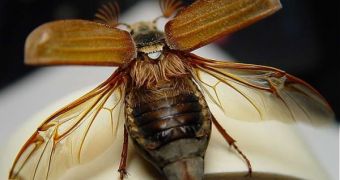A new book, authored by Jeffrey Lockwood, emphasizes the vulnerability that the United States currently has to foreign bioattacks, and highlights the importance of federal authorities devising an efficient way of counteracting the possible effects of such an attack, if it were to happen. Lockwood, who is a professor of entomology at the Wyoming University, wrote the “Six-legged Soldiers: Using Insects as Weapons of War” as a sequel to other books detailing the use of bugs and insect as weapons.
This idea is not new, as proven by the fact that recently declassified Japanese documents show that, during World War II, low-altitude flying planes of the Empire spread plague-infected fleas over Chinese territories, causing a minimum of 500,000 deaths. Throughout history, important victories were won via the use of either snakes, mosquitoes, or even human corpses. Now, Lockwood admits that dangerous diseases could be brought by a terrorist to any large airport terminal in the world in a suitcase.
There are, of course, numerous challenges to be faced by any terrorist group attempting to use insects as weapons. There is the issue of growing and nurturing them, which takes a lab to house the process, and is not exactly a piece of cake. Then, there are airport controls, and, finally, the ultimate test – the bugs' ability to survive in their new environment. If most of them die before mating, then even the most well designed and executed plan fails.
However, these creatures could be used for something else rather than killing people, and namely for destroying crops. The US Department of Agriculture already argues that billions of dollars have been lost to crop damage, caused by bugs that are not indigenous to America.
The Army started looking into entomology in the 1960s, and has never stopped doing so. At present, it's funding programs into “cyber-insects”, in an attempt to create bugs that are remote-controllable. The way to achieve this is by implementing an electric stimulator in the larval form of the insects, and waiting until it develops, when an RC eventually makes it go which way a soldier wants it to.

 14 DAY TRIAL //
14 DAY TRIAL //